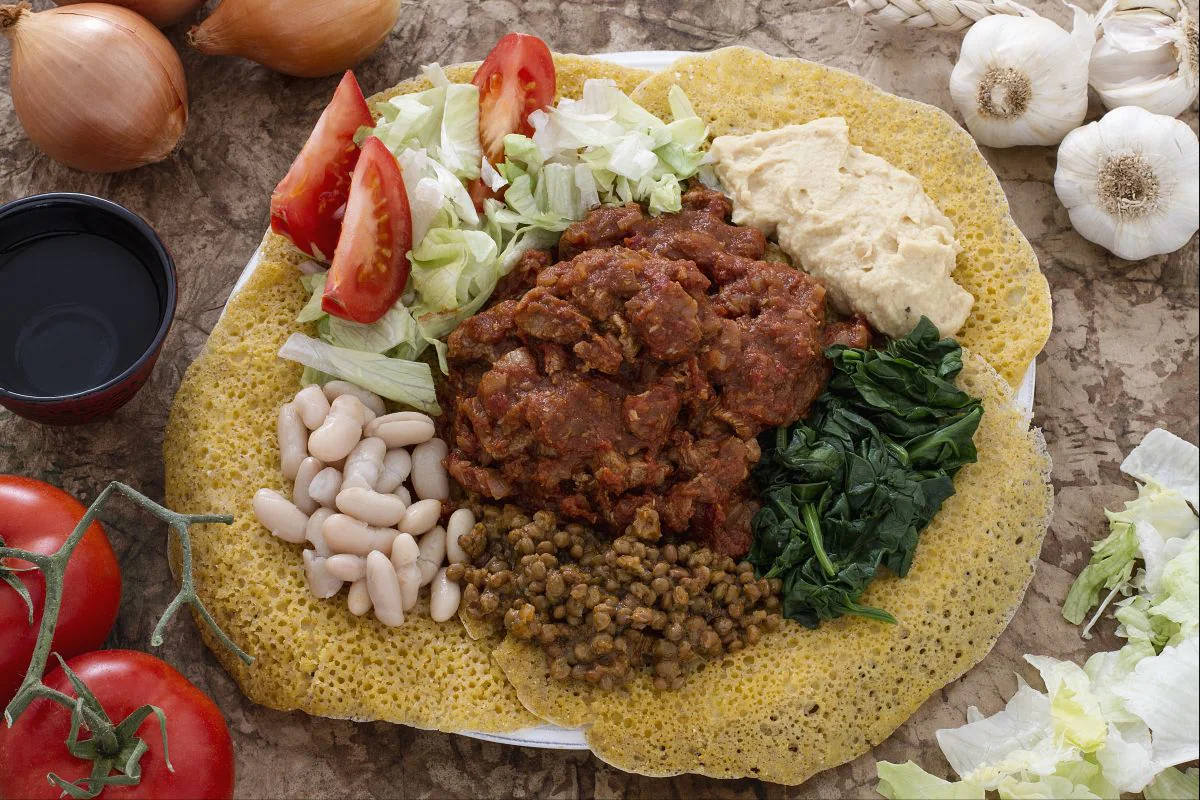Arepas stuffed with meat
- Average
- 3 h 50 min
- Kcal 544

Zighinì is one of those dishes that just brings people together, you know? This Zighinì recipe hails from Eritrea and Ethiopia—places where it’s really celebrated both as a spicy beef stew and a whole meal on its own. The star? The tender beef. It simmers with tomatoes, onions, loads of veggies, and gets seasoned with a real-deal berberè spice blend.
Berberè gives it that kick, no question—chili, ginger, cloves, and a bunch of other spices make each bite super warming and really really flavorful. What makes it even cooler? You eat it with injera, this spongy flatbread that's slightly tangy—because, get this, it’s fermented for a couple of days. Just tear off a piece of injera and scoop up the stew. Hands on, family-style—pretty much.
For anyone wanting something different from the usual, this Eritrean beef stew is a must-try. People often add sides like sautéed spinach, beans, or a mild chickpea cream, so your plate’s all colorful and really filling. The combo of moist beef, rich sauce, and crispy veggies creates a mix of tastes and textures that’s way way fun in one meal.
And here's the thing: since Zighinì with injera is so tied to tradition, you really get a sense of Ethiopian and Eritrean culture—especially with everyone sharing from the same plate. It’s an awesome way to break out of the dinner routine. For sure. It’s perfect for anyone curious about East African recipes or looking for an authentic Zighinì dish that brings fresh flavors to the table.
Whether you call it comfort food or a special treat, zighinì truly stands out. It’s unique—no doubt. Homemade and unforgettable. I gotta say, when you dig in and eat with your hands like they do in the Horn of Africa, it’s a flavorful adventure. Every bite tells a story of its rich cultural heritage. Seriously good.
You might also like:

To prepare the zighinì, start with the injera bread, which requires two days to ferment: find the detailed recipe by clicking Injera bread (injera bread). Mix the three flours in a large bowl; dissolve the dry yeast in 250 ml of warm water (alternatively, you can use 6 g of fresh yeast) and pour the liquid in a stream over the flours. Mix vigorously with a whisk to obtain a thick, soft, and homogeneous batter that you will cover with plastic wrap and leave at room temperature for 2 days. After 2 days, add 150 ml of boiling water and baking soda to the mixture; mix with the whisk and cover everything again with the plastic wrap then let it rest for another hour, after which the mixture will appear swollen and full of bubbles 1. To cook the bread, you will need to use a round non-stick pan: heat it very well and pour about 70 grams of the mixture onto it. As soon as bubbles start to appear on the surface 2, cover with a lid and finish cooking: it will take about 2 minutes, you will notice that cooking is finished because the bread changes color 3. Once cooked, cover the bread very well with plastic wrap to prevent it from drying out.

Now prepare the stew: slice and finely chop the onions 4 and place them in a pan with a drizzle of oil along with the crushed garlic cloves 5. Sauté everything over moderate heat, then add the berbere 6 and let it season for a few minutes.

Add the peeled tomatoes 7, salt if necessary, and let it cook over low heat for about ten minutes 8. Meanwhile, cut the beef pulp 9 into pieces about 1 cm (try to cut them as evenly as possible to make cooking uniform).

Add the meat to the sauce directly in the pan 10, mix, and let it cook with a lid for about 2 hours, stirring occasionally and adding warm water if the sauce becomes too dry 11. After two hours, the meat should be tender and the sauce thick but not dry 12; if this is not the case, add some water and cook for another 10-20 minutes. Towards the end of cooking, adjust the salt to taste.

Prepare the accompaniment for the stew: blend the already cooked chickpeas in a mixer with a drizzle of oil, salt, and pepper to taste (13-14). Sauté the washed spinach with a drizzle of oil in a pan for a few minutes and salt them 15. You can leave the other legumes natural or season them with oil, parsley, salt, and pepper to taste. Wash the salad; wash and quarter the tomatoes.

Once the meat is ready, you can assemble the zighinì: prepare a large plate (flat if possible) for every 3-4 diners, placing 3-4 injera stacked on top of each other 16, and place a couple of generous spoonfuls of stew in the center 17. Around the meat, arrange the vegetables and legumes: a spoonful of chickpea cream 18,

a handful of little salad and some fresh tomatoes 19, a spoonful of spinach, one of beans 20, and finally one of lentils. Your zighinì is ready: serve it very hot and be ready to refill the plate if the meat runs out quickly!